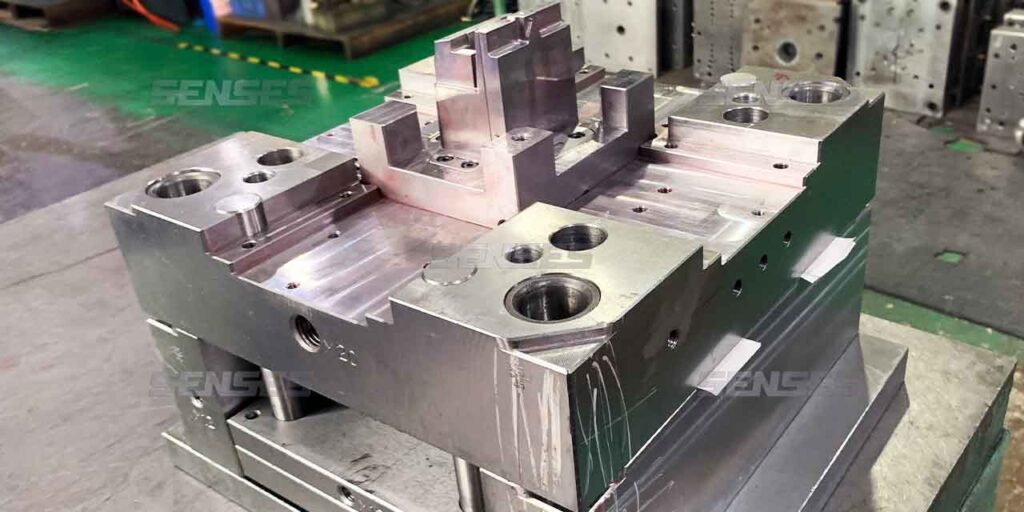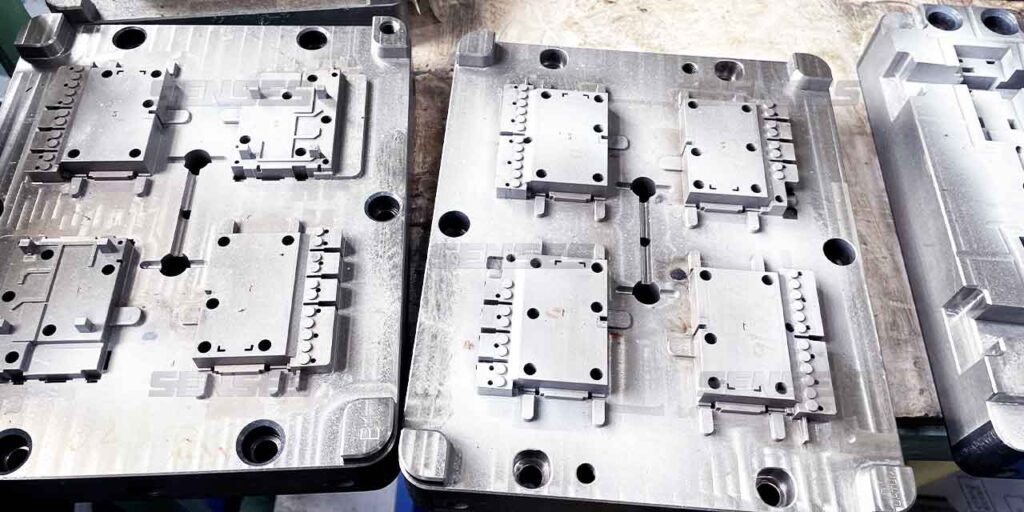Plastic injection mold making is a critical process in the manufacturing industry, enabling the mass production of high-quality plastic parts and components. This technique involves designing and creating molds that are used to shape molten plastic into precise and complex forms. With applications ranging from automotive parts to consumer electronics, plastic injection mold making plays a pivotal role in ensuring product consistency, efficiency, and durability. By leveraging advanced technologies and materials, skilled mold makers can produce custom molds that meet specific production needs, thereby enhancing the overall manufacturing process.
What is Plastic Injection Mold Making?

Plastic injection mold making is a manufacturing process used to produce large volumes of plastic parts with high precision and consistency. It involves creating a custom mold, usually made from either steel or aluminum, that defines the shape of the final product. Steel molds are highly durable and capable of withstanding high production volumes, making them ideal for long-term projects. Aluminum molds, on the other hand, are less expensive and quicker to produce, which makes them suitable for shorter production runs and prototyping. During the process, molten plastic is injected into the mold under high pressure, filling every cavity and taking on the exact shape of the mold. Once the plastic cools and solidifies, the mold opens, and the newly formed part is ejected.
The Injection Mold Making Process
Making an injection mold involves several key steps to ensure you get molds for producing plastic parts. Here’s a brief overview of the key steps involved:
1.Designing the Mold
The process starts with designing the mold using CAD (computer-aided design) software. Engineers create detailed plans that show the exact shape and size of the mold.
2. Selecting the Right Materials
Next, you need to choose the right materials for the mold. Steel and aluminum are the most common choices. Steel molds are strong and great for large production runs, while aluminum molds are cheaper and quicker to make, which is perfect for short runs or prototypes. The choice depends on how many parts you need, how complicated they are, and your budget.
3. Machining and Tooling
Once the design and materials are ready, it’s time for machining and tooling. This means using CNC machines to shape the mold parts according to the design. This involves milling, drilling, and sometimes electrical discharge machining (EDM) to get all the details right.
4. Mold Assembly
After machining, the mold parts are assembled. This means putting together the cores, cavities, and other components to create the complete mold. It’s important to assemble the mold correctly to ensure it works well and produces consistent parts. The assembled mold is checked for alignment and fit.
5.Testing and Refining
Before full production, the mold is tested to make sure it meets all specifications and works properly. This might involve trial runs to produce sample parts.
Common Materials Used in Injection Mold Making
Steel
Steel is one of the most commonly used materials for injection molds due to its strength and durability. There are different types of steel used in mold making, such as P20, H13, and stainless steel, each offering unique properties:
- P20 Steel: Known for its good toughness and machinability, P20 steel is ideal for plastic molds and die-casting dies. It offers excellent polishability, making it suitable for producing high-quality surface finishes.
- H13 Steel: H13 is a hot-work tool steel that provides high resistance to thermal fatigue and wear, making it suitable for molds that undergo high-temperature operations. It is commonly used in applications requiring high durability and strength.
Aluminum
Aluminum is another popular choice for injection molds, especially for prototypes and short production runs. Key properties of aluminum include:
- Lightweight: Aluminum is significantly lighter than steel, which makes it easier to handle and machine. This property contributes to faster production times and lower manufacturing costs.
- Excellent Machinability: Aluminum can be machined quickly and efficiently, reducing the time and cost of mold production. This makes it a preferred choice for creating prototype molds and parts that require quick turnaround times.
Criteria for selecting materials for different applications
When selecting materials for injection mold making, several key criteria should be considered to ensure the optimal performance of the mold for the specific application:
- Production Volume: For high-volume production, durable and wear-resistant steels such as H13 and S7 are ideal. H13 steel can withstand high temperatures and frequent use, making it perfect for long production runs. S7 steel is known for its impact resistance, which is crucial for molds that need to handle repetitive stress.
- Part Complexity: Complex parts often require steels that are easy to machine and polish. P20 steel is favored for its good machinability and excellent polishability, making it suitable for molds that need to produce detailed and high-quality surface finishes.
- Operating Environment: The conditions in which the mold will be used play a significant role in steel selection. For high-temperature environments, H13 steel is a robust choice due to its thermal fatigue resistance. For environments involving corrosive materials or where hygiene is critical, stainless steel is preferred for its corrosion resistance and ease of cleaning.
- Surface Finish Requirements: For parts that demand a high-quality surface finish, steels like P20 and 718 are excellent choices. 718 steel offers superb polishability and corrosion resistance, making it ideal for precision parts such as optical components and medical devices.
- Cost Considerations: Budget constraints also affect the choice of steel. While premium steels like H13 and S7 offer excellent durability and performance, they are more expensive. For cost-effective solutions without compromising too much on quality, P20 steel is a balanced choice, offering good toughness and polishability at a more affordable price.
Types of Injection Molds
Injection molds come in various types, each designed to meet specific manufacturing needs and product requirements. Here are some common types of injection molds:
1. Single-Cavity Molds
Single-cavity molds are designed to produce one part per cycle. They are typically used for low-volume production or when the part size is very large. These molds are simple and cost-effective, making them ideal for prototyping and small batch production.
2. Multi-Cavity Molds
Multi-cavity molds have multiple cavities of the same part, allowing multiple parts to be produced in a single cycle. This type of mold is ideal for high-volume production as it increases efficiency and reduces production time and cost per part.
3. Family Molds
Family molds have multiple cavities for different parts of the same assembly. This type of mold is useful for producing sets of parts that are assembled together later. Family molds are cost-effective for producing complex assemblies in a single production run.
4. Hot Runner Molds
Hot runner molds use a heated system to keep the plastic in a molten state within the runner. This eliminates the need for runners to be removed from the final part, reducing waste and improving cycle times. Hot runner systems are more complex and expensive but offer significant advantages in efficiency and material savings.
5. Cold Runner Molds
Cold runner molds use a simpler system where the plastic solidifies in the runner and must be removed from the part after molding. These molds are less expensive and easier to maintain but generate more waste and have longer cycle times compared to hot runner molds.
6. Two-Shot Molds
Two-shot molds, also known as multi-material molds, allow for the injection of two different materials into the same mold. This technique is used to create parts with multiple colors or materials, providing enhanced design flexibility and functionality.
7. Insert Molds
Insert molds are designed to incorporate pre-made inserts, such as metal or plastic components, into the injection molded part. This process is useful for creating parts with embedded components, like threaded inserts or electrical contacts, enhancing the part’s functionality without secondary operations.
Benefits of Custom Injection Molds

Unlock the full potential of your production with custom injection molds tailored to your precise specifications. Custom molds offer a range of benefits, including enhanced design flexibility, improved part quality, and increased efficiency. By investing in custom molds, you can achieve higher quality and consistency in your parts, reduce waste, and lower manufacturing costs. Our team specializes in designing and manufacturing custom injection molds that meet your unique requirements, ensuring that every detail is optimized for your production process. With our custom molds, you can streamline your manufacturing operations, increase productivity, and gain a competitive edge in the market. Experience the benefits of custom injection molds and take your production to the next level.
Choosing the Right Injection Mold Maker
Choosing the right injection mold maker is a critical decision that can significantly impact the success of your project. It’s essential to consider several factors when selecting a mold maker, including their experience, expertise, and reputation in the industry. Look for a mold maker with a proven track record of delivering high-quality molds that meet or exceed customer expectations. Consider their capabilities in mold design, manufacturing, and testing, as well as their ability to work with a variety of materials. An ISO certification, such as ISO 9001, is also a valuable indicator of a mold maker’s commitment to quality management practices. By choosing an injection mold maker with the right experience, expertise, and certifications, you can ensure that your project is in capable hands and achieve the best possible results.
Senses: Your Partner in Injection Molding Solutions
Senses is an ISO 9001:2015 certified plastic injection molding company, offering a comprehensive array of services including mold and part design, prototyping, small-batch production, and full-scale manufacturing. We serve a diverse range of industries, encompassing automotive, medical, and consumer electronics. Our focus is on ensuring each product we deliver meets the highest standards of quality and functionality.
For personalized solutions and expert consultation, reach out to us today at info@senseschina.com.





